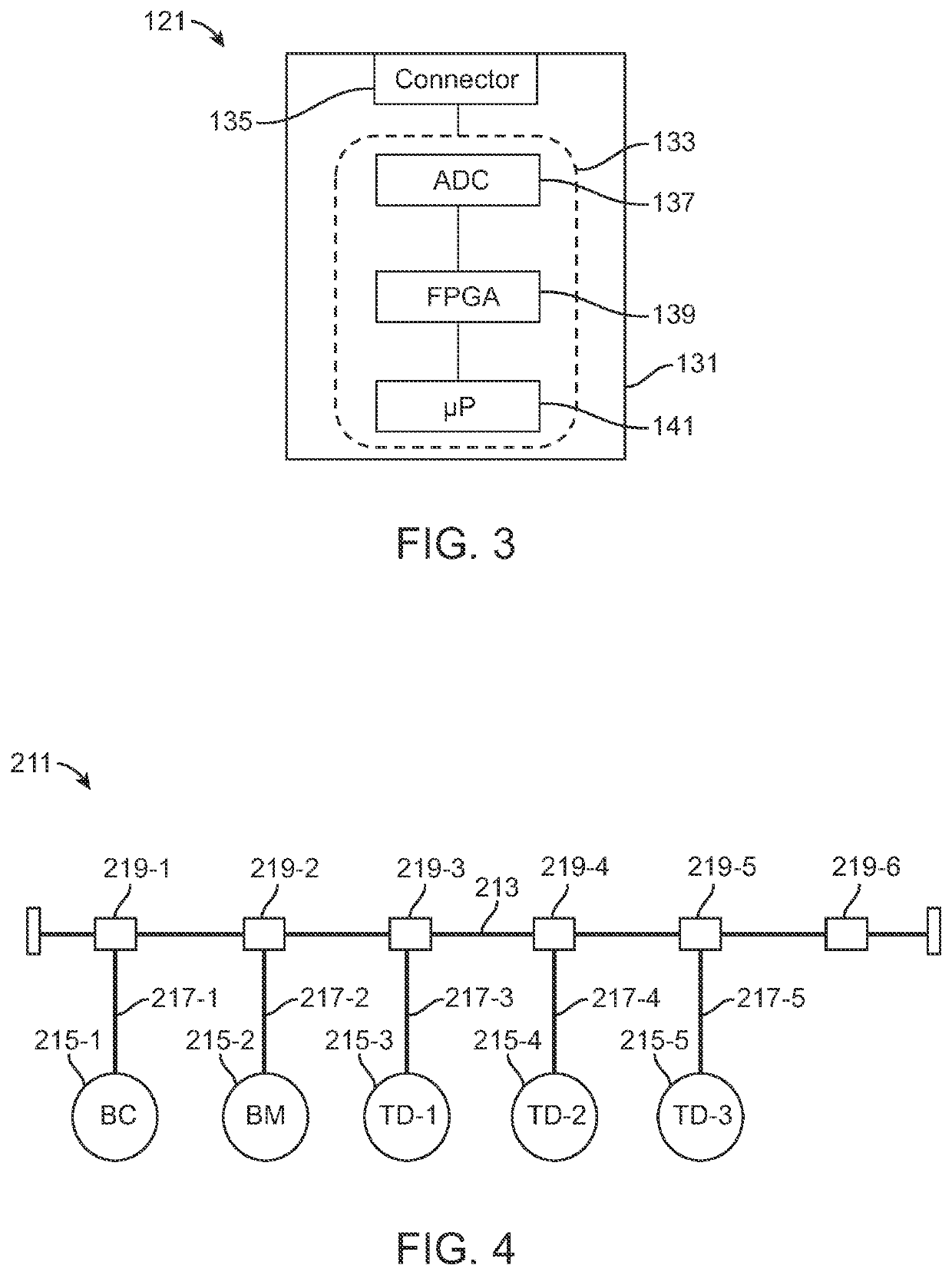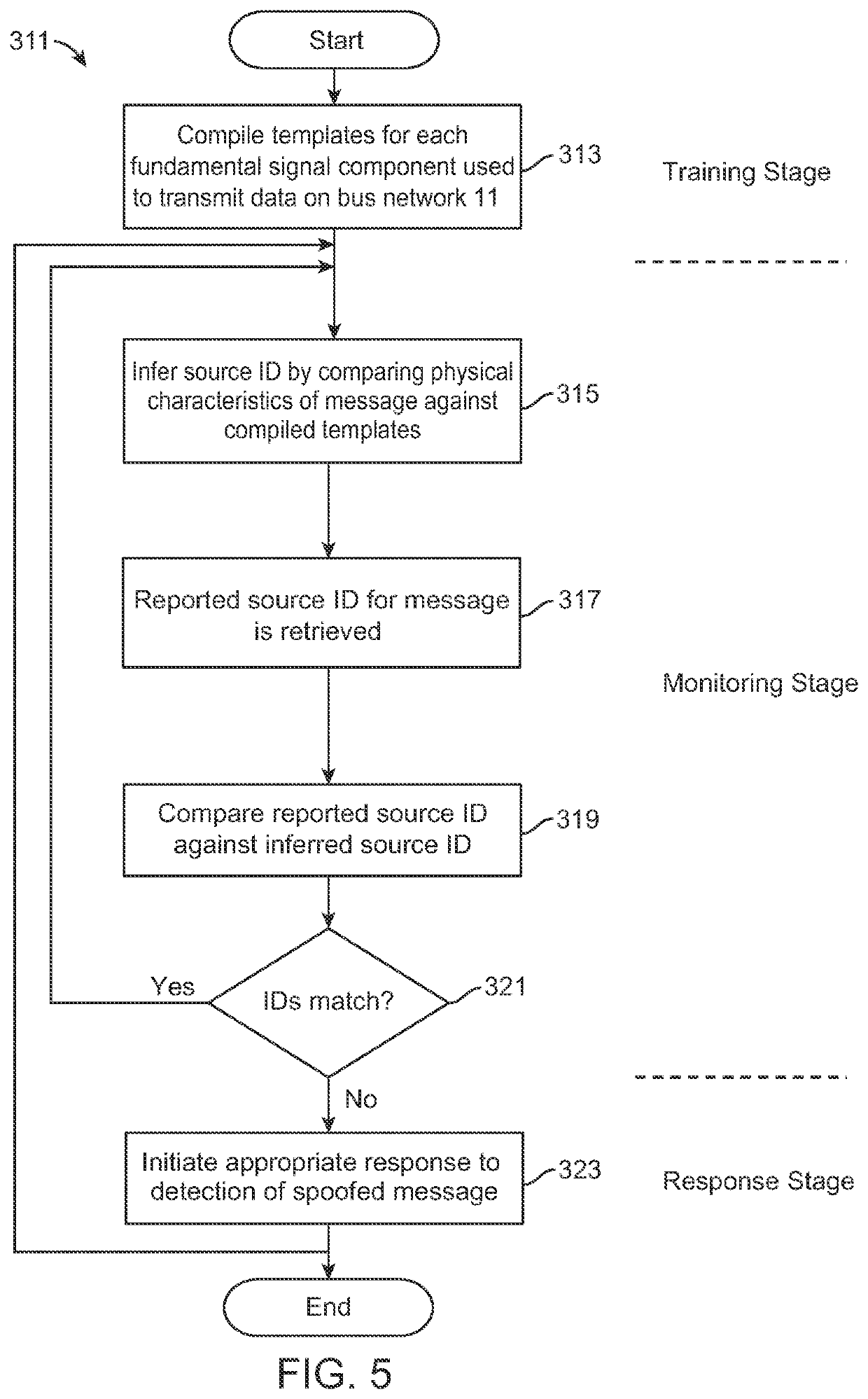System and method of authenticating the source of a communication signal transmitted along a network bus
a communication signal and network bus technology, applied in the field of communication networks, can solve the problems of unscrupulous individuals engaging in cyber-attacks, unauthorized hardware devices, and flat bus networks of the type described above, and achieve the effect of simple design and inexpensive implementation
- Summary
- Abstract
- Description
- Claims
- Application Information
AI Technical Summary
Benefits of technology
Problems solved by technology
Method used
Image
Examples
Embodiment Construction
Communication System 111
[0042]Referring now to FIG. 2, there is shown a simplified schematic representation of a communication system constructed according to the teachings of the present invention, the system being defined generally by reference numeral 111. As will be explained in detail below, communication system 111, which is constructed using a flat bus topology, is specifically designed to authenticate the source of communication data transmitted thereon and, in turn, initiate an appropriate response upon detecting a spoofed message.
[0043]As can be seen, communication system, or network, 111 is similar to communication system 11 in that communication system 111 comprises a central network bus 113 to which a plurality of network elements, or nodes, 115-1 thru 115-6 is coupled via corresponding links, or connectors, 117-1 thru 117-6, respectively. To facilitate the connection of nodes 115 to network bus 113, a plurality of bus couplers 119-1 thru 119-6 is connected inline to ne...
PUM
 Login to View More
Login to View More Abstract
Description
Claims
Application Information
 Login to View More
Login to View More - R&D
- Intellectual Property
- Life Sciences
- Materials
- Tech Scout
- Unparalleled Data Quality
- Higher Quality Content
- 60% Fewer Hallucinations
Browse by: Latest US Patents, China's latest patents, Technical Efficacy Thesaurus, Application Domain, Technology Topic, Popular Technical Reports.
© 2025 PatSnap. All rights reserved.Legal|Privacy policy|Modern Slavery Act Transparency Statement|Sitemap|About US| Contact US: help@patsnap.com



